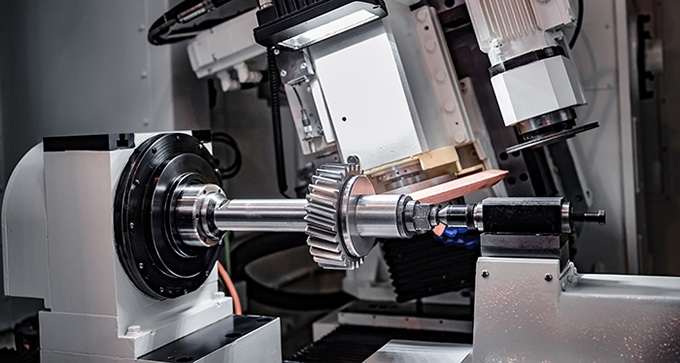In the rapid development of modern power electronics technology, the three-phase inverter has emerged as a crucial component in power conversion and control. Whether in renewable energy generation systems like solar photovoltaics and wind power, industrial automation, electric vehicle drives, or grid interconnection and energy storage systems, the three-phase inverter has become a driving force behind energy transition and industrial advancement due to its high efficiency, reliability, and flexibility. From a professional perspective, Inverter.com will provide an in-depth analysis of the key advantages of three-phase inverters.
High-Efficiency Conversion, Enhancing Energy
- High-Efficiency Design
By utilizing advanced power semiconductor devices (such as IGBTs and SiC MOSFETs), optimized circuit topologies, and intelligent control algorithms, three-phase inverters achieve efficient conversion from DC to AC. Compared to single-phase inverters, the increased number of phases in three-phase inverters results in current waveforms that are closer to sine waves, reducing harmonic distortion and minimizing power loss and electromagnetic interference. This enhances overall conversion efficiency. Currently, the conversion efficiency of high-end three-phase inverters can easily reach over 98%, and under specific conditions, it can approach 99%, significantly improving energy utilization.
- Flexible Power Factor Control
Three-phase inverters not only effectively control output voltage amplitude and frequency but can also adjust the output power factor as needed. In grid interconnection or industrial applications, adjusting the power factor reduces reactive power transmission, minimizing grid losses and enhancing system stability and efficiency. Particularly in distributed generation systems, proper power factor control ensures harmonious interaction between the inverter and the grid, facilitating the integration of renewable energy into the grid.

High Reliability, Ensuring Stable System Operation
- Redundancy Design and Fault Protection
Three-phase inverters often employ a modular design, where each module operates independently for easy maintenance and replacement. Additionally, by incorporating redundancy designs (such as redundant power supplies and control units), the system can automatically switch to backup modes when some components fail, ensuring continuous operation. Moreover, the inverter is equipped with extensive fault detection and protection mechanisms, including overcurrent, overvoltage, undervoltage, and overheating protections, which quickly identify and isolate faults, preventing their escalation and ensuring the system operates safely and stably.
- Wide Input Voltage Range Adaptability
Three-phase inverters can adapt to wide variations in DC input voltage. In renewable energy generation systems, where natural conditions like sunlight intensity or wind speed can cause dynamic changes in DC voltage, high-performance three-phase inverters operate steadily across a broad voltage range without requiring frequent voltage adjustments, minimizing the impact of voltage fluctuations on system stability.
Intelligent Control, Enhancing System Flexibility
- Advanced Control Strategies
With the advancement of control theory and digital signal processing technology, control strategies for three-phase inverters have become increasingly sophisticated. From traditional PID control to modern techniques like vector control, direct torque control, and sliding mode control, these advanced strategies not only improve the inverter's dynamic response and steady-state accuracy but also allow the inverter to adapt flexibly to complex conditions and load variations. In distributed generation and microgrid systems, intelligent control algorithms enable adaptive regulation and coordinated control, increasing system flexibility and stability.
- Communication Interfaces and Remote Monitoring
Modern three-phase inverters are typically equipped with various communication interfaces (such as CAN, Modbus, and Ethernet) that support data exchange and remote monitoring with other devices or systems. Through remote monitoring systems, users can access real-time operational status, fault information, and energy statistics, enabling remote management and maintenance of the inverter. This intelligent and networked management approach not only improves operational efficiency but also reduces labor costs, supporting the smart transformation of power systems. The 22kW three-phase frequency inverter with sensorless vector control sold by Inverter.com can be widely used in high-efficiency scenarios such as heavy machinery, motors, and equipment.

Environmentally Friendly and Energy-Efficient, Promoting Sustainable Development
- Green and Low-Carbon
As a power conversion device, the energy consumption and emission levels of a three-phase inverter are key indicators of its environmental performance. Modern three-phase inverters are designed with energy efficiency and environmental considerations in mind, using low-power components and optimized thermal designs to reduce power consumption and cooling requirements. In renewable energy systems, efficient three-phase inverters minimize energy loss during conversion, increasing renewable energy utilization, reducing dependence on fossil fuels, and promoting green and low-carbon development.
- Harmonic Suppression and Grid-Friendly Operation
Three-phase inverters deliver high-quality sine wave outputs while also suppressing harmonics effectively. With built-in active filters or specific control strategies, the inverter reduces harmonic distortion in output voltage and current, minimizing grid pollution. Additionally, the inverter can adjust output power and phase based on grid demands, ensuring synchronized operation and power balance with the grid, enhancing grid stability and reliability, and fostering harmonious interaction between renewable energy and the grid.
In summary, three-phase inverters, with their high-efficiency conversion, reliability, intelligent control, and environmental benefits, demonstrate strong vitality and broad application prospects in the field of power conversion and control. As technology advances and renewable energy continues to grow, three-phase inverters will remain critical in driving energy transition and promoting sustainable development. At Home Power Inverter, we are confident that with ongoing innovation and market expansion, three-phase inverters will become even more efficient, intelligent, and environmentally friendly, contributing significantly to the sustainable development of society.
